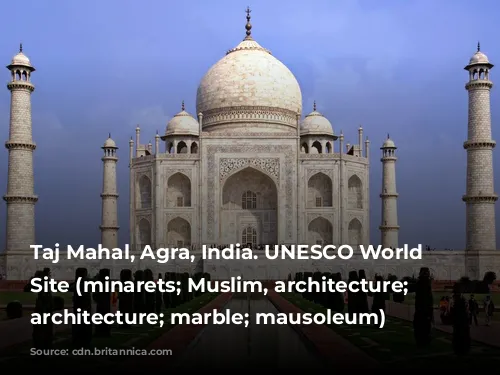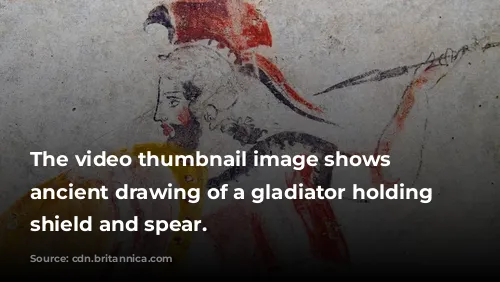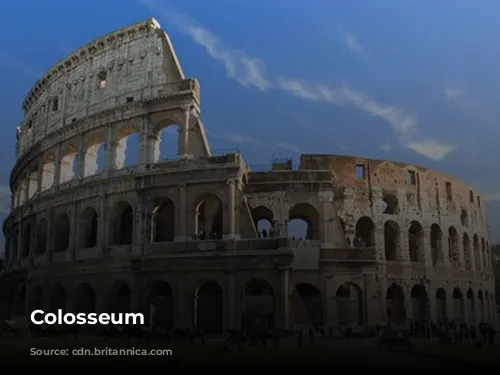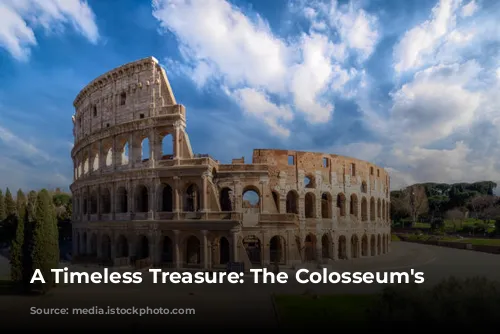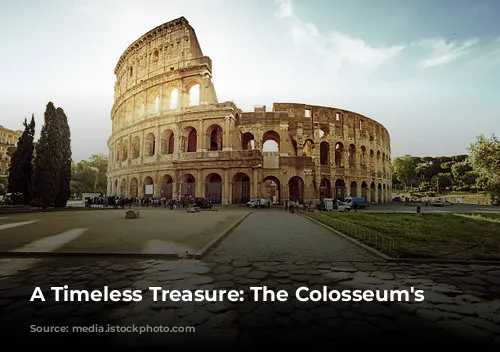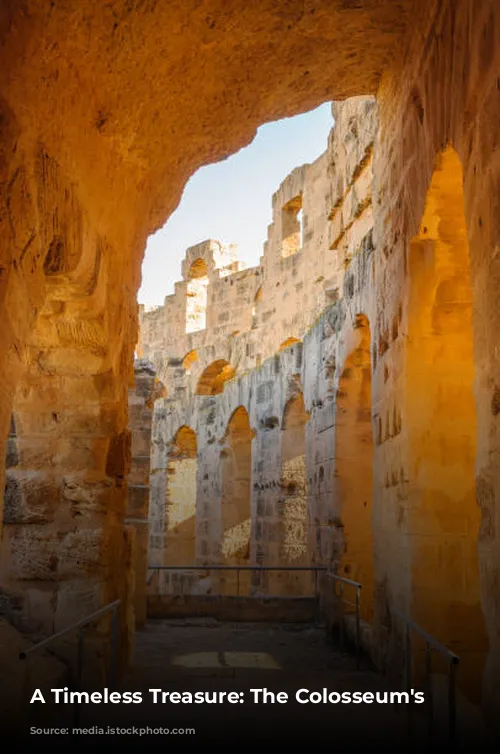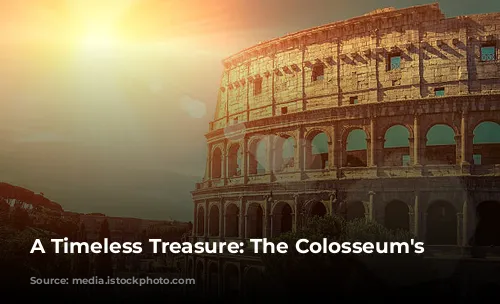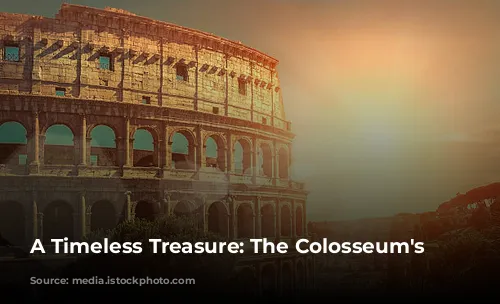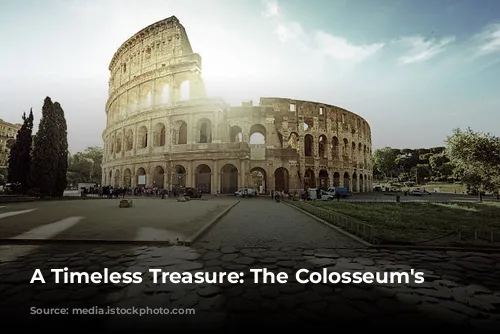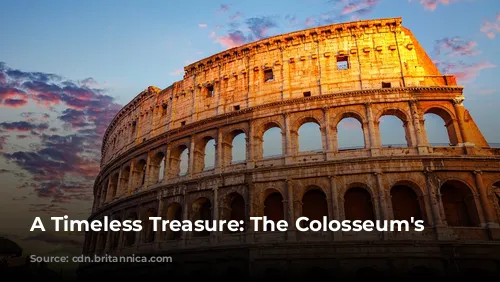The Colosseum, a towering testament to ancient Rome’s architectural and engineering brilliance, stands as one of the few mostly intact structures from the Roman Empire. Not only is it a symbol of Rome’s glorious past, but it also serves as a significant source of tourism revenue for the Italian government. In 2018, the Colosseum, Roman Forum, and Palatine Hill collectively generated more than $63.3 million (€53.8 million), making them the most lucrative tourist attraction in Italy.
This iconic landmark has witnessed the rise and fall of civilizations. After the decline of the Western Roman Empire, the Colosseum fell into a state of disrepair. In the 12th century, it was transformed into a fortress by powerful families like the Frangipane and Annibaldi. Sadly, during the late 15th century, Pope Alexander VI authorized the use of the Colosseum as a quarry, stripping it of valuable materials. After centuries of neglect, state-funded restoration efforts commenced in the 1990s, breathing new life into this architectural marvel.
Built for Glory: The Colosseum’s Origins
The Colosseum was born from an imperial ambition to revitalize Rome after the tumultuous “Year of the Four Emperors” in 69 CE. Like other amphitheaters, Emperor Vespasian envisioned the Colosseum as a center of entertainment, where gladiatorial combats, animal hunts, and even mock naval battles would enthrall the masses.
Construction commenced under Vespasian between 70 and 72 CE, culminating in its grand dedication in 80 CE by his son and successor, Titus. His son, Domitian, completed the structure in 82 CE by adding the fourth story. It is important to note that the Colosseum’s construction was financed by the spoils of war, specifically from Titus’s conquest of Jerusalem in 70 CE. Sadly, the construction also employed enslaved Jews from Judea.
An Architectural Masterpiece: The Colosseum’s Design and Features
The Colosseum is an elliptical amphitheater, also known as the Flavian Amphitheatre, constructed of stone, concrete, and tuff. Its impressive four-story structure rises to a height of 156 meters (513 feet), covering an area of 189 meters by 156 meters (620 feet by 513 feet). This massive arena could accommodate a staggering 50,000 spectators, eager to witness the spectacle of gladiatorial combat.
The Colosseum was strategically located east of the Palatine Hill, on the former grounds of Nero’s Golden House. The artificial lake, a centerpiece of Nero’s palace complex, was drained to make way for the Colosseum. This choice was not only practical but also symbolic. Vespasian, who rose from humble beginnings, chose to replace the tyrannical Nero’s private lake with a public amphitheater, showcasing his commitment to the people.
The Colosseum’s construction was a feat of engineering brilliance. Unlike earlier amphitheaters, which were often built into hillsides for structural support, the Colosseum stands as a freestanding structure. It employs a sophisticated system of barrel and groin vaults, forming its impressive facade. Three stories are adorned with arcades, framed by engaged columns in the Doric, Ionic, and Corinthian orders, a design that later influenced the Renaissance codification known as the assemblage of orders. Travertine stone forms the main structure and facade, while volcanic tufa was used for the secondary walls. The inner bowl and the arcade vaults are made of concrete.
The Colosseum provided a sheltered experience for its massive audience. A massive retractable awning, known as a velarium, protected spectators from the sun. Supporting masts extended from corbels built into the upper story of the Colosseum, requiring hundreds of Roman sailors to manipulate the rigging that extended and retracted the velarium. The Colosseum was the site of thrilling gladiatorial combats, man-versus-animal contests, and even elaborate mock naval battles. However, the authenticity of claims that early Christians were martyred in the arena remains uncertain.
A Legacy of Change: The Colosseum Through the Ages
Over the centuries, the Colosseum witnessed a transformation in its purpose and role. In medieval times, it served as a church, later becoming a fortress for powerful Roman families like the Frangipane and Annibaldi. However, the Colosseum faced challenges from lightning strikes, earthquakes, vandalism, and pollution. This led to the gradual disappearance of its marble seats and decorative materials, as the site was exploited as a quarry for over a thousand years.
Fortunately, preservation efforts gained momentum in the 19th century, notably led by Pius VIII. Significant restoration projects commenced in the 1990s, restoring this architectural marvel to its former glory. Today, the Colosseum stands as one of Rome’s most popular tourist attractions, welcoming close to seven million visitors annually. Regularly changing exhibitions showcasing the culture of ancient Rome further enrich the experience for visitors.
The Colosseum stands as a timeless treasure, a reminder of the grandeur and ingenuity of the Roman Empire. Its remarkable resilience has seen it endure centuries of change and neglect, emerging as a beacon of history and a symbol of Rome’s enduring legacy.
